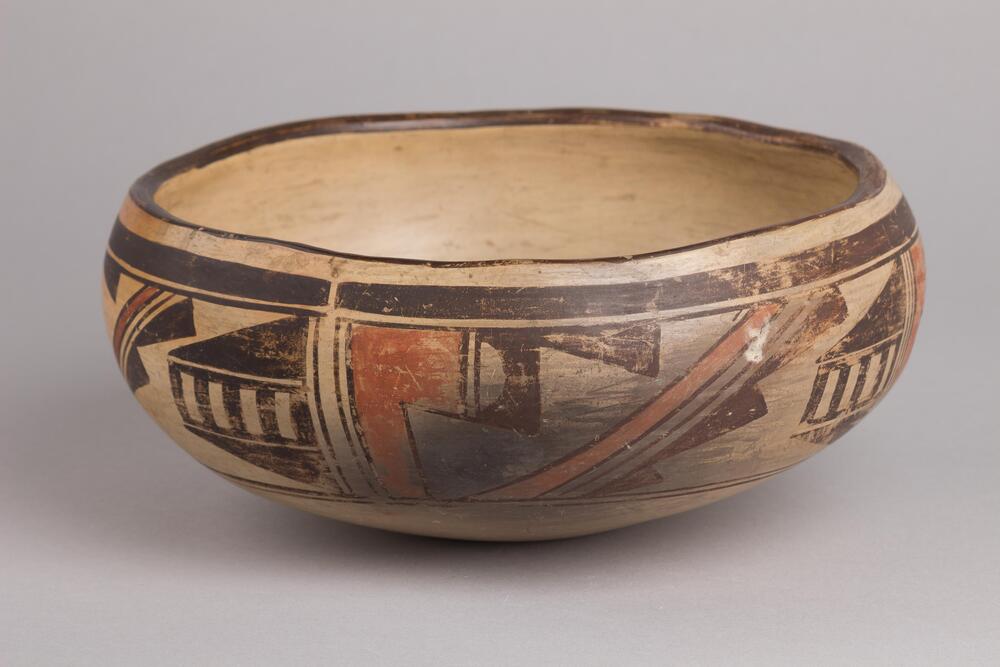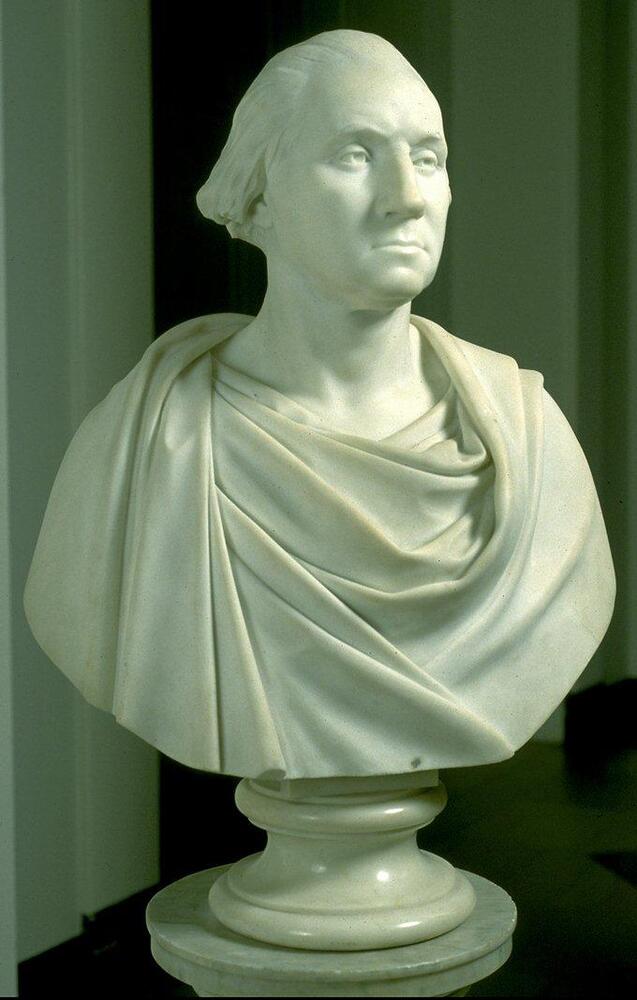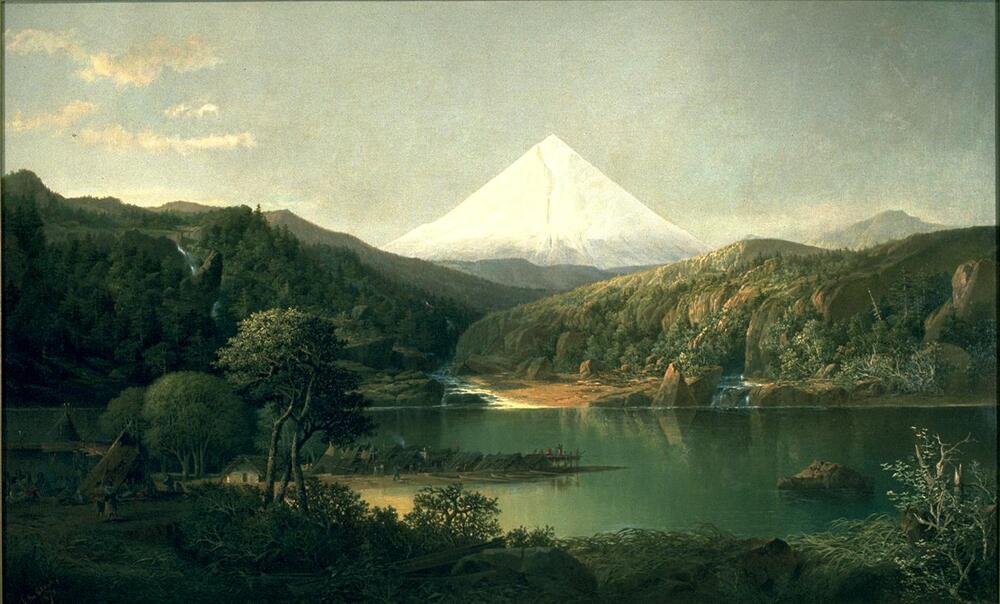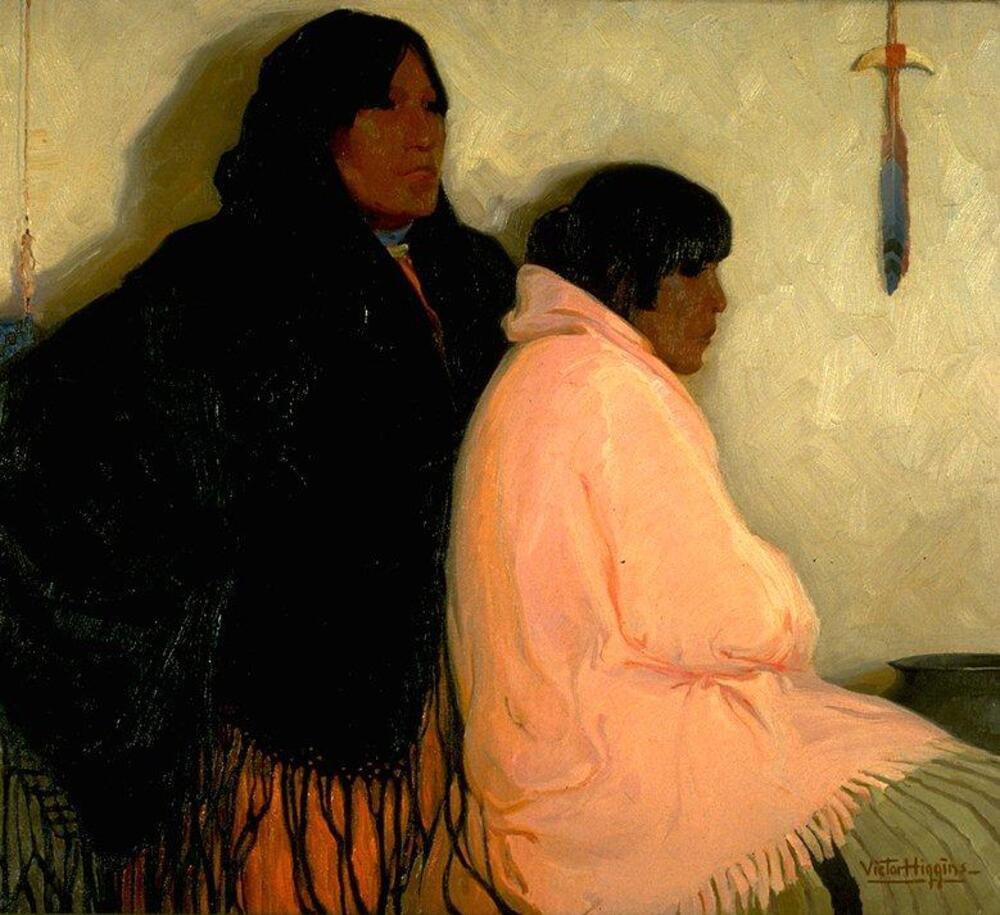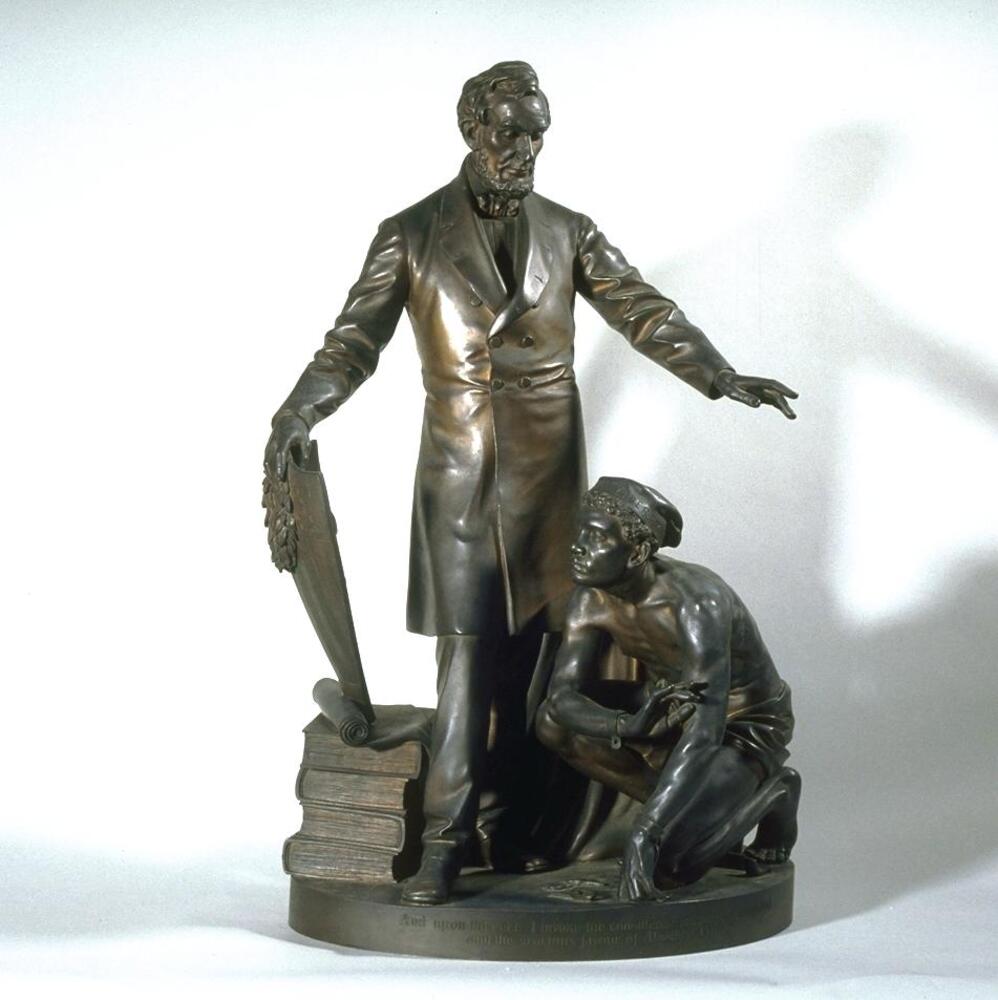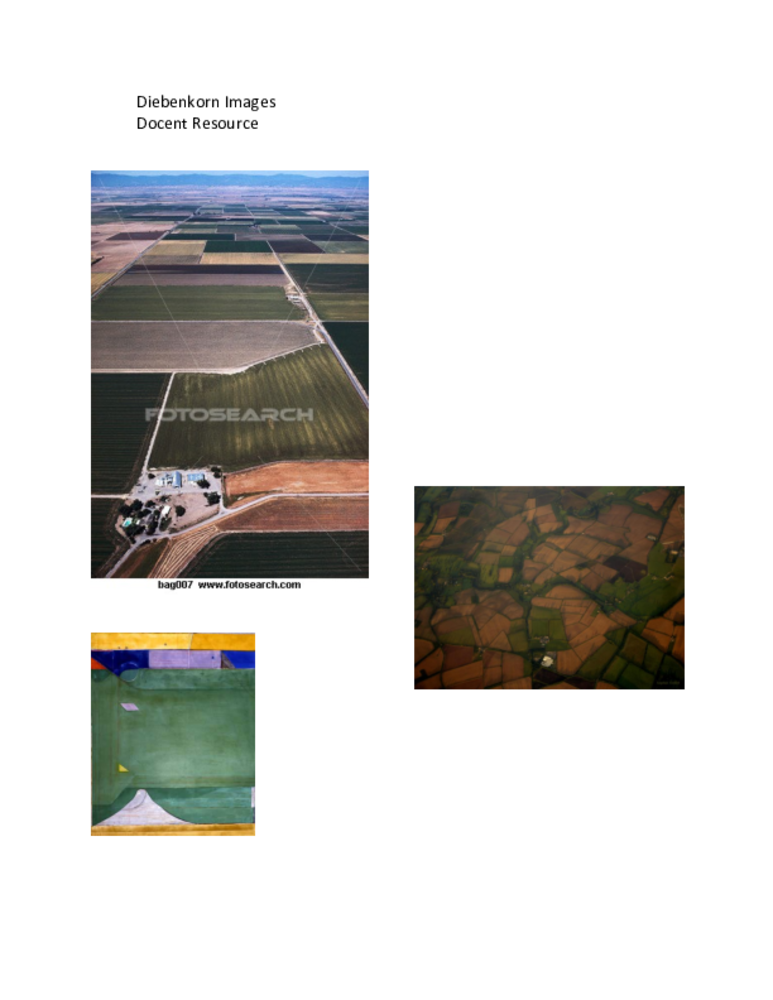Fifth Grade: Picturing America
Docent Curricular Tour
Picturing America has a rich history at UMMA. It grew out of a teacher workshop we offered in conjunction with an NEH initiative, the website for which is still active: http://picturingamerica.neh.gov/
Subsequently, we had a CE on this and developed lots of ideas for a tour. Each day group worked with a particular piece and strategized ways to present it. Below are notes from each group. You may hear several docent voices within the notes for a particular stop. For example, several groups seemed to have worked on the Diebenkorn. As always, select the ideas that work for you.
Be sure to develop an organizing theme for your tour and introduce it at the beginning. These notes do note have any connective tissue yet.
From Picturing America website: http://picturingamerica.neh.gov/
The Picturing America program uses art as a catalyst for the study of America—the cultural, political, and historical threads woven into our nation’s fabric over time. …The art in Picturing America, used in conjunction with teacher resources, help students experience the humanity of history and enhance the teaching and understanding of America’s past.
Stop 1: Fannie Nampeyo, Bowl and Maria Martinez, Pot
Engagement Strategy: Have any of you made clay coil pots in art class?
These pots were all made by that technique. We're going to concentrate on #1 and #3, but all have similar qualities. Both are made by Native Americans from the Southwest desert/mesa region.
a. Hopi: A group of people who later became the Hopi tribe we know developed a sort of pottery that looked like this. Toward the end of the 19th century a young woman named Nampeyo saw some of this pre-historic pottery (before written records). Did she see it in a museum? She recognized that this represented her ancestors and tried to make pots in the same style. What colors has she used? What do they remind you of? Do you have an idea of what a desert would look like? What do the figures remind you of? What do they look like to you, even though they are rather abstract? What would you use a bowl shaped like this for?
b. Pueblo: In 1909 an archeologist went to a famous potter, Maria Martinez and her husband Julian, and showed them shards (broken pieces) of prehistoric pottery he had examined and asked whether they could figure out how their ancestors had created this beautiful black pottery. It took them 8 years, but they managed. Martinez's pots became extraordinarily valuable. Look at the pattern. What color is it? Does the variation in the texture, which becomes the pattern, alter the color? Our museum chose to put a spotlight over this pot; how would it look in a different light? What is the pattern on the pots
c. Wrap-up: What is the source of the patterns/images? How would using the natural world fit your idea of Native American culture? What is the inspiration of both of these artists? Do you find that re-discovering the techniques of one's ancestors does something to help you discover yourself?
My note: Susan talked about reproduction, but I was reminded of Cellini's rediscovery/re-invention of the lost-wax method of casting bronze. I saw it more as a re-assertion of identity and cultural history.
d. If time in a five minute stop, one might consider to what extent we have included Native American culture as part of the melting-pot of American culture, considering words that we have taken from them such as raccoon, moccasin, canoe, igloo, succotash...and all of the place names. But that's the retired English teacher.
Stop 2: Randolph Rogers, George Washington Lansdowne Portrait
Rembrandt Peale, Martha Dandridge Custis Washington (1731–1802)
If you think of the President of the United States wife---who do you think of?
(Michelle Obama)
If you were to make a portrait of her what would it look like? How would she be –standing, sitting, walking?
What would you put in it?
This is a portrait of the wife of the President of the United States---Martha Washington.
This painting of Martha Washington is what the artist saw, we don’t have any photo’s and so we can’t know what she really looked like.
The goal of the artist was to capture the “inner character”
What do you see when you look at Martha?
What clues does the artist give you?
He hoped to emphasis her stoic nature and strength of character.
What can you know about her from looking at this picture?
· Clothes---rich
· Expression, pleasant
· Color—soft pinks
· Background, landscape but not highly defined.
The portrait of George had artifacts to tell you who he was. What artifacts are there in this for Martha?
Why don’t you think there are any?
Was the wife of the President important?
Why no jewelry?
Democracy—George wanted to be called Mr. President—not like English royalty.
The oval frame was typical of the time---but this frame is trompe l’oeil stone work which is like ancient Roman funerary sculpture in which a portrait of the deceased is enframed in a stone oculus.
Stop 3: George Christian Gebelier; Samuel Kirk and Sons; Silver / Tiffany
We chose to assume that the kids will have had some exposure to the work/names of Tiffany and FLW.
We would focus on their passion for beauty (their definition of) and all-consuming nature of their vision/involvement in the works.
Their drive to put art at the center of daily life.
How their visions produced works very different in style
Spend time on Tiffany – the Havemeyer objects and the totality of the interior decoration.
Spend time talking about how they were the same – famous, passion for beauty, innovators, art as part of life, contemporaries
Spend time talking about how they were different – use the wisteria glass windows to make the point of their difference. If the kids had seen Falling
Water, it would be a chance to talk about how different the styles were – would these Tiffany pieces (interior decoration) work in a house like Falling Water? Why or why not?
Looking back – looking forward
Stop 4: John Stanley Mt. Hood from the Dalles
Comparison of Thomas Coleʼs View from Mount Holyoke and Bierstadtʼs Looking Down Yosemite Valley with Stanleyʼs Mount Hood
Parallels from readings:
· visual record of a vanishing way of life
· peaceful
· idyllic
· large size puts viewer into the frame
Majestic mountain landscape
· draws viewers into the picture
· softens the light and color to enhance the beauty and idyllic nature of the
· scene
· exaggeration
· way to show folks back East “what was waiting on the western frontier”
Ways to present the work:
· Is this a place you would like to go? Why? (or why not) What do you see that youʼd like to do?
· What has the artist done to draw you in? (perspective, reflections, etc)
· How would you get there? (no roads seen, no railroads)
· What is not in the picture that would be part of life back East? (factories, cities, houses, roads, etc)
· Who are the people in the painting? Is this an idealized view of what was happening to Native Americans at the time (1871)?
Stop 5: Richard Diebenkorn Cityscape I
See attached handout with aerial images.Parallels with UMMA's Diebenkorn Ocean Park #52 (1972)
Begin by looking from the other side of the room:
Describe color(s) Shapes, texture. (What isn't there?)
Think about how could it be a landscape.
What is the mood? Come closer and consider the same questions.
Colors: notice primaries - part of cheerful mood. Imagine difference if red line missing. Notice underpainting- how it contributes to color and particularly texture - gives depth, interest. What foods are evoked
Texture of painting gives it a historical or time quality. The painting has a history of how it was painted, just as the land has a history of how it was formed by geology and humans. Where underpainting is made in thicker paint than pale yellow wash on top, artist would know it will deform through time, and probably produce cracks.
Texture includes splashes. Deliberate or accidental? What do they contribute? (Complexity, liquid, lack of flatness - contrary to first glance, draw attention to process)
What is "round the edges" and what "in the middle"? Cp Cityscape I. Compare with other pictures you have seen.
Relate Diebenkorn's experience as cartographer and aerial hydrographer. If this is aerial landscape, what type - what isn't there? (No buildings, trees - so farmland likely) what farmland would be yellow? Is farmland developed or undeveloped? (Cp Cityscape I) How might the picture be different if Diebenkorn was living in New York City instead of California, or in another country? What image does it give of America? (peace, plenty, happiness - Vietnam war? Social unrest?
compare: English landscape photo by Sophie.
Consider same questions as in Mount Hood.
If landscape, but not aerial, how might it work? What is the difference between a picture of something, and a picture about something?
Land, Line and Color
Consider this essay/exhibition: Maureen Mullarkey, “Richard Diebenkorn prints in Katonah; Contemporary landscapes at Forum Gallery 2004.”
AMERICAN PAINTING in the second half of the 20th century owes more to the Marines than it admits.
Richard Diebenkorn (1922-1993) enlisted in the Marine reserves at Camp Pendelton. Uncertain of a career path, he knew only that he liked to draw. At Quantico (where he flunked Officer Candidate School), a sympathetic sergeant kept him supplied with art materials. His skills sideslipped him into cartography; he was preparing for airborne reconnaissance over Japanese positions when the war ended.
That training ignited the genius—the distinctive aerial perspective and rectilinear landscape structure—of his “Ocean Park” series of abstract paintings begun in the late 60s and continuing for 20 years. The rest is art history.
His path to the “Ocean Park” series and beyond is on full display at the Katonah Museum. “Richard Diebenkorn: Prints 1948-1993” is the first retrospective of his prints. The exhibition features over 100 works, including series rarely exhibited in their entirety. Mr. Diebenkorn’s attraction toward various intaglio printing methods dates to the early days of his career. He made his first prints in 1948 and worked at printmaking on and off for the next thirty years. Beginning in the late 70s until his death, he immersed himself in sustained print projects, spending part of every year in the printing workshop
Though he is more widely known as a painter than a printmaker, Mr. Diebenkorn’s prints are as distinguished as his paintings. Indeed, many of them offer themselves as paintings by another means. Take note of the imposing aquatint “Green” (1986), requiring seven plates and the assistance of five printers, or the woodblock “Ochre,” (1983) produced in concert with an expert ukiyo-e printer and carver. In each, color exerts its weight in luminous, textured overlays and painterly detail, dispelling any lingering thought of print-making as a step child to painting.
One of the advantages of this exhibition is its emphasis on line, an austerity that lends steel to the lyricism of Diebenkorn’s color sense. Drawing remains at the heart of Richard Diebenkorn’s achievement, in his abstract as much as his figurative work. Line provided counter to expressionist gestures—what Diebenkorn termed “that 50s morass.” It sustains the structure of his paintings no less than his hundreds of works on paper. The centrality of his line, running through the prints, is enhanced by the nitric acid bite and the irrefutability of scrapers, burins, and that drypoint burr.
Prints have the advantage of being embraceable. While the monumental size of Mr. Diebenkorn’s paintings holds the viewer at a necessary distance, even the largest of the color prints can be observed intimately. You can follow the rhythm of its parts—the puddling of the colors, the wandering smudges and chance effects of the printing process—without losing sight of the whole.
See also http://www.safran-arts.com/42day/art/art4apr/art0422.html
Other Objects—some with labels—Appropriate for Picturing America Tour
· Victor Higgins, Oka and Walmacho
· Randolph Rogers, Lincoln and the Emancipated Slave and Thomas Ball, Emancipation Group
· Dwight William Tryon, Twilight
Ammi Phillips
United States, 1788–1865
Portrait of a Young Man Holding a Copy of Milton’s Work
1823
Oil on canvas
Gift of The Daniel and Harriet Fusfeld Folk Art Collection, 2002/1.199
In contrast to professionally trained academic painters such as Rembrandt Peale—who was a contemporary of Phillips and whose portrait of Martha Washington is hung nearby—there also existed a broad tradition of itinerant self-taught painters in America, including Ammi Phillips. Phillips worked mainly in the towns and smaller cities of New England painting portraits commissioned by members of the newly prosperous middle class that emerged in the decades after the American Revolutionary War (1775–1783). These self-taught artists often mimicked the work of professional painters but without their technical fluency and often years after styles and fashions had moved on, lending their paintings qualities that appeared old fashioned even in their own time.
Phillips’s style changed so dramatically during his career that his work was at one time ascribed to two different artists. By the 1820s, his technique had become more refined and naturalistic, showing a greater facility in the modeling of facial features, preserving the sitter’s likeness, and giving the subject a strong sense of individuality. Despite this attention to detail, the identity of the sitter in this portrait remains a mystery. The sitter was most likely a successful local landowner or merchant who wished to make known his material prosperity. The dark jacket, crisp white collar, tie, and stockpin point to the sitter’s affluence, while the volume of Milton is intended to speak to his sophistication and high level of education. .
Sylvester Phelps Hodgdon
United States, 1830–1906
White Mountains in September, North Conway, New Hampshire
1853
Oil on canvas
Bequest of Henry C. Lewis, 1895.57
During the 19th century, the White Mountains of New Hampshire stirred the imagination of many Americans. The region became famous after the Willey Family tragedy in 1826, in which nine people lost their lives in an avalanche caused by mudslides; their home was left standing when they hastily fled, and an open bible was found inside on a table. This poignant event became the subject in literature, art, and scientific journals, reinforcing contemporary notions of the country’s dramatic and untamed mountain wildernesses. The White Mountains subsequently grew to be a major tourist attraction and a magnet for artists. Mt. Washington, a 6,228-foot peak named after the first president of the United States, was one of the highlights of the region. It was one of the most recognizable places in America after John Kensett exhibited a painting of it in 1851 that was reproduced as a lithograph and distributed to over 13,000 people. In Hodgdon’s view of this iconic site, the forbidding mountain looms over the domesticated valley below, populated only by a small haywain and some sheep. He often set up dramatic contrasts between dark and light in his paintings, as here, and this autumn scene allowed him also to capture the transition from summer to winter.
L. Luthy
United States, 1803–1863
White Mountains (Mount Washington from Sunset Hill, North Conway)
circa 1854
Oil on canvas
Bequest of Henry C. Lewis, 1895.44
Though the White Mountains were once a long and arduous journey, by 1851 it was possible to take a train with relative ease to within eight miles of Mt. Washington. North Conway became an especially popular tourist destination, and by the 1850s it was home to arguably the first artist’s colony in the United States. Luthy is one of the many artists who flocked to the region and painted more than 400 views of the White Mountains in the second half of the 19th century. The view of Mt. Washington from Sunset Hill in North Conway—the one first made famous by John Kensett—was a particularly popular vantage point from which to observe and paint this icon of American scenery. The demand for paintings of Mount Washington came both from tourists, who provided a ready market for souvenir paintings, and from those who had never visited but were nevertheless familiar with the site from paintings or literature. Though Luthy’s view, like Hodgdon’s, centrally features Mt. Washington, there are differences in details—houses are nestled in the valley, there is no snow on mountain, and the summer sky is clear—and it seems like an altogether less forbidding place.
Daniel Huntington
United States, 1816–1906
In the Mountain Fastness
1850
Oil on canvas
Gift of Mr. Jean A. Wetmore, 1916.1
In the mid-19th century there was a strong alliance between art and religion. Clergymen, who were some of the most important art critics of the day, even advocated an “art of moral improvement,” necessitated, in the words of one, by the “materialism of the age, and the continuously increasing prosperity of the country, the absorbing pursuit of wealth, and accompanying love of vulgar displays of its acquisition.” In this period Huntington, an intensely religious man, is known to have painted several scenes from John Bunyan’s 1678 The Pilgrim’s Progress, including In the Mountain Fastness, whose title is derived from a line
in the book. Bunyan’s Christian allegory was enjoying renewed popularity at the time and had inspired painters such as Thomas Cole and Frederic Edwin Church. Indeed it was so popular that a traveling panorama of its scenes was made based on the work of several prominent artists, including Huntington. In the Mountain Fastness, a departure from this painter’s usual figural work, is probably an imagined scene; it was not meant to be a faithful record of an actual location but a visual exercise in Christian principles. The rocky crags of the mountainous retreat represent the obstacles faced by the pilgrim as he struggles to find salvation and overcome temptation; the light breaking through the clouds alludes to the impending triumph and glory of Christianity.
Charles Ferdinand Wimar
United States, 1828–1862
The Attack on an Emigrant Train
1856
Oil on canvas
Bequest of Henry C. Lewis, 1895.80
In this painting a wagon train of American pioneers crossing the prairie is attacked by a group of Native Americans armed with tomahawks and bows and arrows; as the men in the first wagon take up arms to defend themselves, their comrades rush forward to join the fight. The Attack on an Emigrant Train was painted during the height of westward expansion in the United States (1840s–1860s) and is very much a product of its time. Its dramatic staging of two cultures clashing reinforced the doctrine of Manifest Destiny—the belief that European Americans had a right and even a Christian duty to expand throughout the North American continent. According to this theory, Indians were literally an obstruction in the path of American progress. Here they are portrayed as ferocious aggressors arresting the forward movement of the peaceful immigrants. The white man’s steady aim of his gun—taken up to protect women and children who take shelter in the wagons—is contrasted with the chaotic mass of half-clothed warriors armed with simple weapons. Images such as this reinforced the prevailing notion of the Native American as primitive, even savage, and perpetuated the idea they were another element of the untamed landscape that needed to be subdued and civilized. Wimar’s painting became enormously influential, inspiring and establishing a stereotype of attacks on wagon trains that persisted well into the 20th century.
Eastman Johnson
United States, 1824–1906
Boyhood of Lincoln
1868
Oil on canvas
Bequest of Henry C. Lewis, 1895.90
In the middle of the 18th century Eastman Johnson was one of the foremost genre painters in the United States, exploring themes of American life in a number of interior scenes and large rural tableaux. In this period the United States was experiencing dramatic changes as a result of rapid industrialization: cities were growing quickly, railroads altered patterns of movement, and many people were uprooted. Shifts in the social structure provoked a nostalgia for paintings of scenes that embodied American virtues and could provide some sense of a common identity.
In this painting, completed just three years after Lincoln’s assassination, the president is portrayed as a young boy reading a book by the warm glow of a fire in the darkness of a modest room. The degree to which the boy is absorbed by his reading underscores Lincoln’s avid quest for knowledge. The circumstances of his education were well known: he was born in a one-room log cabin to a poor family, to parents who could not read or write; he worked on the farm and went to school only when he could be spared; the family had few books, and these he read again and again, traveling many miles to borrow others. Lincoln himself had said of his childhood, “Reading was my favorite thing to do. ... I read while plowing the fields and riding my horse. At night I read by the light of the fire.” Though Lincoln’s humble upbringing was often celebrated in print, it was rarely illustrated; this popular painting helped to make Lincoln a national emblem: the savior of the union who was also a common man— unpretentious, accessible, and responsive to people without influence.
William Hart
United States (born Scotland), 1823–1894
The Adirondacks
circa 1848
Oil on canvas
Museum Purchase, 1979/2.136
In the decades prior to the Civil War, the boundaries of the United States were pushing ever further West, and the idea of the American landscape, with its soaring mountains, verdant forests, pristine rivers, and exotic inhabitants, held the imagination of the public. American scenery was celebrated in poetry, prose, and the visual arts, and the painters of what is now known as the Hudson River school, including William Hart, specialized in producing expansive views of it. Hart, in particular, was noted for his smooth, serene vistas executed in minute detail. The luxuriant and unspoiled landscape of the Adirondacks is the main subject of this painting, but it is inhabited by diminutive figures of Native Americans, one on the near shore facing the river and another on the water in a canoe. The idea that Native Americans coexisted, as here, harmoniously with nature was pervasive in American thought in the 19th century, and though they were admired for this quality, it also made them ripe for “civilizing” and justified governmental policies that caused the destruction of their cultures. The potential passing of these indigenous civilizations was a theme taken up by many artists of the period, and the darkening sky and juxtaposition of light and shadow in The Adirondacks may allude to its seemingly inevitable decline.
Arthur Wesley Dow
United States, 1857–1922
Spring Landscape
1892
Oil on canvas
Bequest of Margaret Watson Parker 1954/1.168
As part of a self-imposed program of study of the art of non-Western cultures, Arthur Wesley Dow visited the Boston Public Library in 1891 and discovered Japanese woodblock prints. “One evening with Hokusai,” he said, “gave me more light on composition and decorative effect than years of study of pictures. I surely ought to compose in an entirely different manner.” Spring Landscape, a depiction of flowering trees flanking a rustic path, was painted a year after that visit, and the influence of Japanese art is evident in its asymmetrically arranged composition, strong dynamic lines, and vibrant blocks of color. The decorative accents of the blossoms and dark trunks set against the overcast sky and the green sward of rising landscape flatten spatial recession, and the subdued but saturated colors are woven into a delicate harmony. Painting for Dow was “visual music,” a rhythmic harmony of colored spaces, rather than a transcription of what was seen. Instead of striving to imitate nature, he believed in accentuating its inherent spiritual beauty through the careful balance of compositional elements such as line, color, and notan, a Japanese term for the relationship between light and dark areas in a pictorial space. Dow became an influential teacher, and his unorthodox principles of composition, set out in a book of that name, redefined the teaching of art in the United States for several generations.
William Merritt Chase
United States, 1849–1916
View of the Brooklyn Navy Yard
1886–1890
Oil on panel
Gift of Mr. and Mrs. Norman Hirschl, 1961/1.170
From 1886 to 1890 Chase executed many small paintings of New York City’s harbors and parks, like this tiny panoramic View of the Brooklyn Navy Yard. This view, taken from across the East River, captures some of the Yard’s more industrial aspects; smokestacks and ship’s masts in the distance are a reminder that this is where merchant vessels were manufactured. But the Navy Yard was also where the admiralty and officers were housed, and it contained pleasure grounds that were open to the public. Chase painted many views of it, including leisure scenes from within its precincts. All were made to appeal to a domestic art market that was rejecting European painters and subjects in favor of ones that celebrated American life. This sort of cultural pride was also felt by the artist, who stated: “There are charming bits in Central Park and Prospect Park, Brooklyn.... Along the docks and wharves there is every bit as good material as that on the banks of the Thames which the English artists have made immortal.” Chase’s vibrant paintings of these subjects won him critical acclaim and were very popular with the burgeoning middle class. They are often regarded as the first significant studies of the American landscape using Impressionist technique, which may be seen here in the bright palette, finely modulated colors, soft transient atmospheric effects, and lively brushwork.
Helen Frankenthaler
United States, born 1928
Sunset Corner
1969
Acrylic on canvas
Museum Purchase, 1973/1.813
Helen Frankenthaler was a pioneering figure in the Color Field movement that emerged around 1960 in the wake of Abstract Expressionism. Although it retained the earlier movement’s sense of grand scale and interest in exploring the essential properties of paint and canvas, Color Field painting sought to eliminate the personal emotionalism and gestural paint application that were the hallmarks of Abstract Expressionism. In contrast to Jackson Pollack, for example, those drips and splatters allow the viewer to imagine the artist’s interaction with the canvas, painters like Frankenthaler experimented with poured pigments and staining techniques. These caused the paint to merge with the canvas support, eliminating any trace of the brush and emphasizing the material flatness of the painting in order to focus attention on color values.
Frankenthaler’s work is frequently concerned with producing chromatic sensation. Through a sustained and concentrated immersion in the painting’s highly saturated blocks of intense color—"freed" from the crafted bounds of figurative shapes and surface textures—the viewer can experience a visual sensation not unlike that produced by a spectacular sunset.
Mark Tobey
United States, 1890-1976
Broadway Melody
1945
Tempera on board
Gift of Mr. and Mrs. Roger L. Stevens, 1949/1.152
The theme of the city played a key role in the development of Tobey’s hallmark “white writing” style after his return from an extended trip to China and Japan in 1934. New York, in particular, came to represent a “universal city” for the artist, although he chose to live at a remove from the vibrant art scene that was developing there in the immediate postwar period.
Tobey continually revisited the subject of Broadway, a popular emblem of the spectacle of city lights and city life. His fascination was not, however, simply a matter of romantic glorification. Of his first Broadway painting, he wrote that it “astonished me as much as anyone else. Such a feeling of Hell under a lacy design—delicate in spirit but madness.” This feeling is characteristic of Broadway Melody as well. Its successive overlays of rapidly constructed images and writing (the evocative word “tomorrow” is clearly legible in the upper left corner of the painting) both build up the pictured scene to give a sense of depth, and overwhelm the figures interspersed throughout. The dense repetition from one end of the canvas to the other of similar elements without strong variation would become a defining feature of the Abstract Expressionist style of painting, which Tobey pioneered along with his New York counterparts.
Part of 1 Learning Collection
<p>Docent Curricular Tour</p>
Rate this Resource
AVG: 0 | Ratings: 0
& Author Notes
Creative Commons by-nc-saLast Updated
April 27, 2017 2:28 p.m.Report
Reporting Policy
